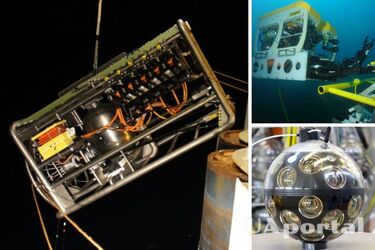A scientific laboratory was opened in the Mediterranean Sea at a depth of 2 kilometers

The Laboratoire Sous-marin Provence Méditerranée (LSPM), which contains the KM3NeT neutrino detector, as well as instruments for oceanic and climate research, has been placed at a depth of 2,450 meters in the Gulf of Lyon at the bottom of the Mediterranean Sea. The website of the French National Center for Scientific Research (CNRS) reported on the opening of the underwater laboratory.
Read also: What breeds of dogs won't be able to survive without humans
The Laboratoire Sous-marin Provence Méditerranée was developed by the French National Center for Scientific Research in collaboration with specialists from the Aix-Marseille University and the IFREMER Oceanographic Institution.
The laboratory was deployed 40 kilometers off from the coast of Toulon, at a depth where sunlight no longer reaches. The main instrument of the LSPM is the KM3NeT (Cubic-Kilometre Neutrino Telescope) neutrino detector, consisting of several thousand glass spheres registring Cherenkov radiation, covering a cubic kilometer of water around.
The detector will look for neutrino particles from distant astrophysical sources, such as supernovae or gamma-ray bursts. Neutrinos will manifest themselves as faint light that will remain from the interaction with water molecules.
The lab has also been outfitted with sensors to monitor ocean conditions, including deoxygenation, oxidation, and seismicity. It will allow tracking of the population of cetaceans and even observe the bioluminescent inhabitants of the ocean.
Earlier, archaeologists in Egypt discovered an ancient papyrus with spells from the Book of the Dead.
If you want to receive the latest news about the war and events in Ukraine, subscribe to our Telegram channel!
